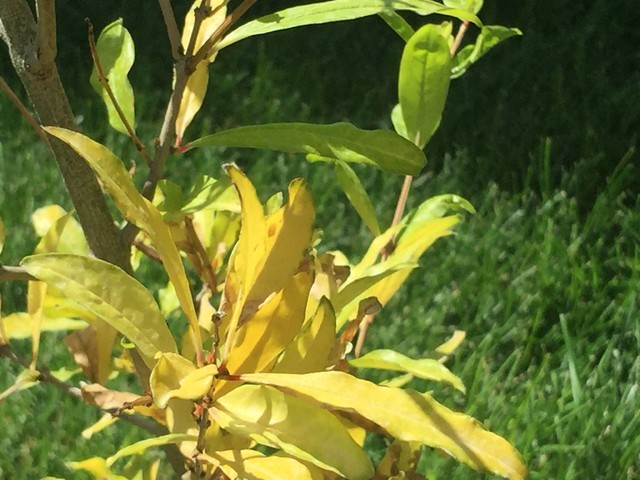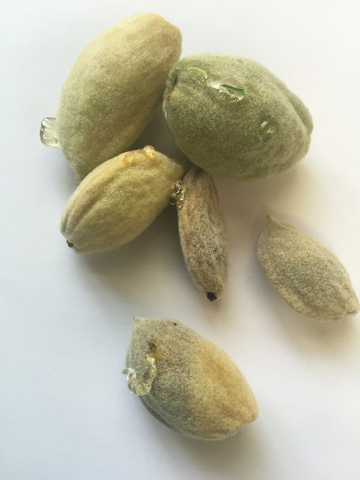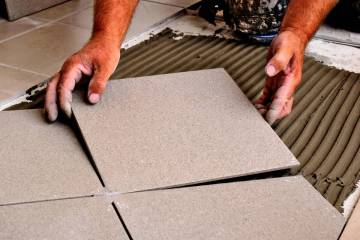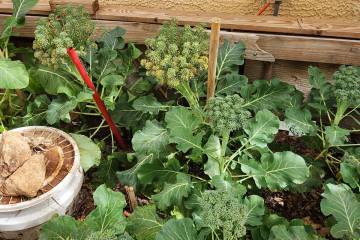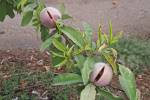Too much, too little watering can cause gardenias to drop buds
Q: I bought a gardenia from Costco a month or so ago. It looks robust, with green, shiny leaves. I placed the pot in front of my house so it gets sunlight in the morning and shaded in the afternoon. I water it every day. When the buds get big but before they bloom, they wilt and fall off.
A: The usual reason for flower buds dropping is a lack of water, uneven watering or watering too much. Another possible reason is a change in light levels. Gardenias are famous for dropping their flower buds on a whim.
Keeping the soil too wet can also be a problem. Make sure your gardenia is in a pot that has holes in the bottom of it for drainage. Each time you water, give it enough so you see water leaving the bottom of the container. Water should move through and out the pot to remove salts that can accumulate in the soil.
Normally you should not have to water daily. How often to water depends on the size of the container and the size of the plant. Purchase a houseplant soil moisture meter for less than $10 from any nursery or garden center.
Stick the tip of this meter into the soil about 4 inches at several locations. Water the plant and read the soil moisture meter immediately after you water. The meter should say “wet.” Do not water again until the meter has moved to the midpoint on the scale between wet and dry.
The other possibility could be a change in light levels. The gardenia was probably grown in a greenhouse under full sun but in a much cooler climate with lower light levels. You are now growing the same gardenia with morning sun and high light intensity.
Give your gardenia a chance to acclimate to this new light exposure. Get a handle on your watering so you are not watering too often or not watering often enough. The gardenia will get used to its new home and begin to bloom.
Q: The bark on the oldest fruit trees has been falling off. The previous owners were wrapping the trunks with plastic and duct tape to prevent squirrels from climbing and stealing the fruit. Is it possible this wrapping damaged the trunk?
A: I can understand the frustration with these ground squirrels. They can clean out an almond tree in one night.
I don’t think wrapping the trunk with duct tape and plastic is a very good idea. I would be worried about the glue on the duct tape and also the transfer of heat from the duct tape to the trunk.
If there is too much heat transferred to the trunk, the damage would be seen mostly on the south- and west-facing sides of the tree. The transfer of heat can kill the living tissue just under the bark and cause the bark to peel away from the tree.
This type of damage could attract borers, insects that attack weakened trees by tunneling just under the bark. They frequently attack trees that are stressed, particularly from heat damage.
It would be better to paint the trunks with diluted white latex paint to help prevent sunburn, although this would not do anything to prevent ground squirrels. I would think a barrier constructed around the trunk to prevent climbing might be a better option. Also the limbs of the trees cannot touch each other or ground squirrels can move from limb to limb and tree to tree.
Consider the white latex paint option and see if the trees can repair themselves with adequate water and fertilizer. As a precaution, remove any loose bark from the trees to get rid of insect hiding places.
Q: My golden barrel cactus appears to be caving in. What causes this?
A: The usual reason for collapse of barrel cactus is overwatering or poor drainage or both. I wouldn’t water them more than once every two or three weeks. They grow in the deserts of our Southwest with infrequent rain.
If you want them to get larger, water them every two or three weeks with 10 or 15 gallons of water. But cacti should never be irrigated frequently. I’m guessing the barrel cactus is rotting internally. Sometimes they will develop holes in their sides from rotting. They can take a lot of internal rot before they finally collapse and we see the damage.
Q: I have an almond tree. It was here when I bought the house last year. It didn’t have any nuts last year. But this year it has tons, although it has been dropping what seems like way more than it should. Also the nuts have a weird sap discharge.
A: The squiggly sap or discharge coming from your almonds is from insects that pierce the young nut with their hypodermic-like mouthpart. These insects can insert it into leaves or fruit and suck out the juices for nourishment.
Insects that cause this kind of damage can be can be leaf-footed plant bug, stink bugs or Western Boxelder bug to name three. If enough of them attack fruit or nuts, it can cause the nuts to drop from the tree due to the damage.
Look for them on your fruit trees and spray with an insecticide or soap and water sprays. Soap and water sprays need to be applied weekly or twice a week. Insecticides are sprayed less often because they leave a poisonous residue on the plant.
Q: The leaves on my peach tree started looking a bit unhealthy. The newer growth looks a bit strange, distorted and yellow and little brown spots as well. This new growth looks like maybe too much water.
A: The yellowing of the new leaves is iron chlorosis. The new leaves are not getting enough available iron from the soil. Iron chlorosis can be brought about by too much applied water or the soil staying too wet and not drying between irrigations. This leads to root damage which affects iron uptake.
Apply an iron chelate to the soil and spray the leaves with an iron chelate when the temperatures are cool. With iron chelate sprays, add a wetting agent to help the iron move inside the leaf and use distilled water instead of tap water.
Some people will use a half tablespoon of liquid dishwater detergent added to a gallon of spray. But I prefer a better soap than this such as a Castile soap or commercial spreader/sticker but from the garden center.
Q: There is a shoot growing from the root of our Anna apple tree. Should I cut it off?
A: Yes. Anytime shoots are coming from the base of a fruit tree or from roots, cut them off.
Q: I bought a bare-root pomegranate and planted it this spring. I planted it in my lawn along with my other fruit trees. The pomegranate is turning yellow. The part of my lawn where it is planted doesn’t drain as well as other parts, so I’m wondering if this is the problem.
A: You are right; this is probably the reason. If this were mine I would dig up the tree carefully and include as much of the rootball, with the soil surrounding it, as possible. Do this early in the morning or late in the day when temperatures are cooler and the sun less intense.
Remove the grass to a distance about 2 feet from the center of the hole. Amend the existing soil with compost and add more soil to that hole so that the tree is elevated in soil above the lawn. This will help drainage.
Replant the pomegranate into the soil so that the tree is elevated slightly above the lawn. Make sure the pomegranate is planted at the same depth in the soil that it was in a container or grown in the field. The roots should be just below the soil surface when you’re finished planting and stake it.
Keep grass or weeds away from the pomegranate. Do not rely on lawn irrigation to provide enough water for your tree. In addition to the lawn irrigation, water it with a hose deeply once a week for two or three weeks. Let the hose run at a trickle for an hour. This will help get it established.
After the pomegranate has established, water it deeply with a hose every two to three weeks.
Bob Morris is a horticulture expert living in Las Vegas and professor emeritus for the University of Nevada. Visit his blog at xtremehorticulture.blogspot.com. Send questions to Extremehort@aol.com.



